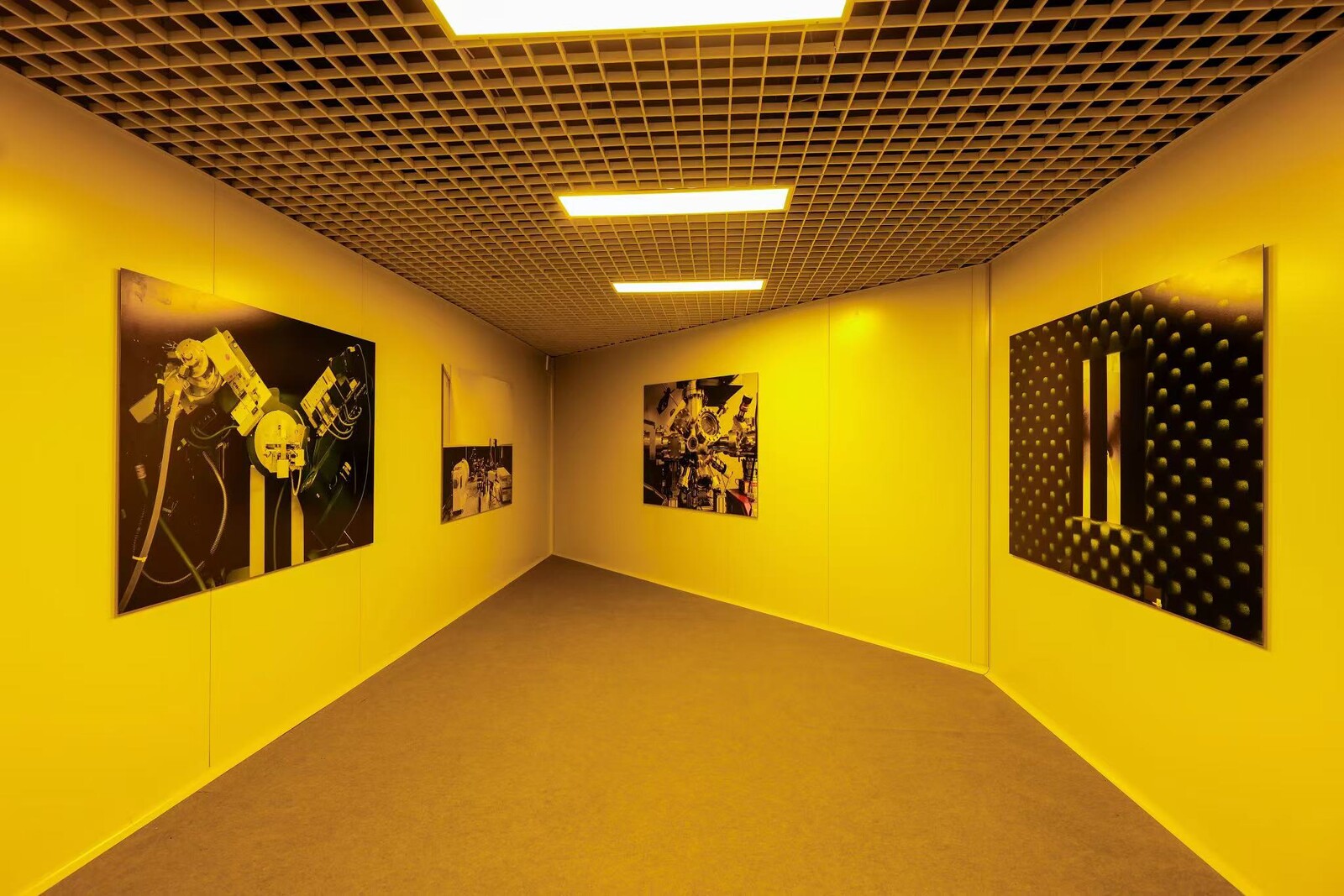Three Body Problem art exhibition prologue
November 9, 2024–February 8, 2025
CAO Shu/CHEN Zhe/FU Hongshuang/Rohini Devasher/HAO Jingfang & WANG Lingjie/LIU Chuang/LIU Xin/LIU Zhangbolong/PENG Ke/Quadrature/Alice WANG/XU Bing/ZHANG Yi/ZHU Jianfei.
The universe remains unsettlingly silent. This silence might represent a tacit consensus among civilisations, arise from insurmountable gaps in time, or reflect a deeper, unfathomable intent of the cosmos. The great silence, like a multifaceted mirror, carries the self-projections of possible cosmic civilisations, lingering before their “first contact.”
“First Contact” is the inaugural art exhibition produced by the Three-Body Universe and curated by independent art and science curator, Iris Long.The exhibition features artworks from 14 groups of artists and aims to explore how The Three-Body Problem, as a work of science fiction, a cultural symbol, and a platform bridging science and imagination, can give rise to creative practices that resonate and intersect with it.
The exhibition takes the story of The Three-Body Problem as a departure point and an open question. It invites the original work to address pressing and thought-provoking issues concerning current technological development and scientific research, engaging with the reality that we live in. The “first contact” of civilisations can be loaded with immense science fictional tension, revolving around listening and decoding, anticipation and unease, technological prowess, and the desire to communicate—perhaps as intimacy, perhaps as a contest. Our assumptions about intelligent life forms in the universe may all be tested by this yet-to-happen “first contact.” In The Three-Body Problem, the notion that “the entire universe will flicker for you” challenges the irrefutable scientific reality in a dramatic way, revealing another cosmic order. Science fiction is sometimes a cognitive method, allowing us to unbind our imagination of technology from linearity. The artworks showcased in First Contact can be seen as responses to the themes raised in The Three-Body Problem about survival modes of civilisations and reflections on the nature of science, traversing the thin membrane between science fiction and reality, and unfolding contemporary, urgent issues layer by layer within a sci-fi context.
When the once-silent universe begins to echo, how does a civilisation interpret signals or languages beyond itself, and how does it re-anchor its own existence? Our understanding of Earth may no longer be an overview effect from orbit, nor even the backward glance of Voyager 1 before it left the solar system. What may seem like an exploration unrelated to daily life—such as the search for extraterrestrial intelligence (SETI)—acts like a lever in space, prying open our imaginations of uncharted stellar relationships, compelling us to reflect on Earth itself, ponder and rehearse possible boisterous interstellar futures, and question where we might go.
The exhibition invites viewers to freely navigate between two spaces representing the perspectives of Earth and extraterrestrial civilisations, speculating on forms of intelligence or life “other-than-us.” There are no strict boundaries between the two spaces, just as our imaginations of alien worlds are always “earth-like but not,” and only by preserving those elements akin to Earth can science fiction imaginations gain profound, realistic significance.
If we consider the “first contact” as a thought experiment—a stone tossed into the silent lake of the universe—it might stir up numerous possibilities in this version of “remembrance of earth’s past” that we find ourselves in.
The exhibition also receives academic support from the Department of Astronomy at Tsinghua University, the Institute of Physics at the Chinese Academy of Sciences, and the Yangtze River Delta Physics Research Center. It is also part of a long-term research project centered on The Three-Body Problem, which includes “The Three-Body Art Global Open Call” and a distributed “Three-Body Science and Art Centre” dedicated to interdisciplinary research between art and fundamental science.




